
Kuwait


Al Tamimi & Company
Al-Hamad Legal Group

Al-Yaqout & Al-Fouzan Legal Group (YFLG)

Alfahad & Partners (Consultants and Attorneys)
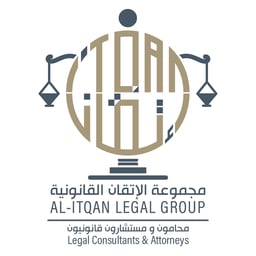
alitqan legal group

Arkan International Legal Consultancy

ASAR – Al Ruwayeh & Partners

Attorney Yaqoub Abdul Mohsen Al-Sanea & Partners Advocates and L

Dar Al-Muhama Law Firm
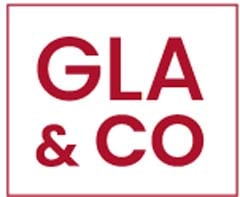
GLA & Company
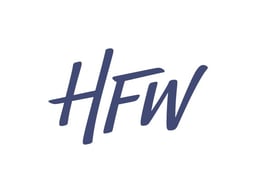
HFW in association with Attorney Rula Dajani

Hussain Al Huraiti & Partners
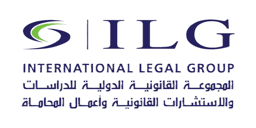
ILG International Legal Group
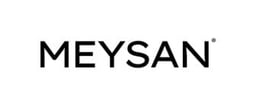
Meysan Partners

Miras Legal
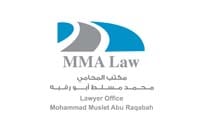
MMA LAW
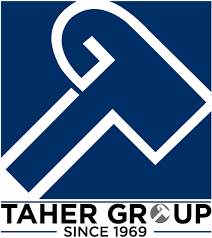
Taher Group Law Firm (TAG)
Firms in the Spotlight

Taher Group Law Firm (TAG)
Taher Group Law Firm has built a distinguished reputation for providing comprehensive legal services across a wide range of practice areas, both locally and internationally.
With decade

Dar Al-Muhama Law Firm
Dar Al Muhama has been one of the most famous law firms in Kuwait which was founded in 2005. The founders are law experts and among the best lawyers in Kuwait who have contributed to creating the law

Alfahad & Partners (Consultants and Attorneys)
Alfahad and Partners is an entrepreneurial and a full-service Kuwaiti law firm with international extent and a focus on growth-oriented businesses. We provide first class, efficient, effective solutio
Interviews
ViewAdel Abdulhadi, Lawyer – Managing Partner
Al Oula Law Firm (Adel Abdulhadi & Partners)

Dr. Fayez Al-Fadhli, Managing Partner
Arkan International Legal Consultancy

Abdullah Al-Samdan, Managing Partner
ILG International Legal Group

Ahmad Alhuriti, Senior Partner and head of the international division
Hussain Al Huraiti & Partners

Abdulrahman Alhouti: Managing Partner
Dar Al-Muhama Law Firm

Yousef Yaqoub AL-Sanea, CEO
Attorney Yaqoub Abdul Mohsen Al-Sanea & Partners Advocates and L

Khalifa Hamed Alyaquot
Al-Yaqout & Al-Fouzan Legal Group (YFLG)
News & Developments
ViewCommercial, Corporate and M&A
Kuwait’s New Narcotics Law: A Modern Regulatory Framework for Public Health, Compliance, and Controlled Substances
Kuwait has entered a transformative phase in its public-health and compliance architecture with the issuance of Decree-Law No. 159 of 2025, effective December 14, 2025, a comprehensive overhaul of the narcotics, psychotropics, and chemical-precursor regime, repealing the four-decade-old 1983 and 1987 laws. The new framework modernizes Kuwait’s approach to substance control through a structured system of licensing, surveillance, treatment, data governance, and inter-agency coordination.
Although the law’s immediate focus is public health and anti-trafficking enforcement, its implications extend into healthcare, pharmaceuticals, logistics, research, compliance, risk management, and corporate governance. This impacts pharmacies, manufacturers, technology providers, and supply-chain operators. This shift aligns with Kuwait’s broader objective of building institutional systems capable of supporting the next generation of economic and social reforms.
At its core, the new regime establishes an integrated governance model, anchored in the Ministry of Health but coordinated with the Ministry of Interior, Customs, laboratories, treatment centers, and cross-border regulatory bodies. The forthcoming Executive Regulation is expected to unify these operational requirements through a detailed rulebook governing licensing, storage, electronic tracking, treatment protocols, and surveillance mechanisms.
Institutional Architecture: Ministry of Health at the Center of a Cross-Sector Control Ecosystem
The law repositions the Ministry of Health as the national authority responsible for the scientific, medical, regulatory, and oversight pillars of the framework. Under the law, the Ministry licenses all entities dealing with narcotic drugs, psychotropics, and chemical precursors; establishes central registers, quota systems, batch-tracking controls, and electronic monitoring platforms; and governs prescribing, dispensing, storage, destruction, and transport through detailed procedures to be formalized in the Executive Regulation. It further oversees rehabilitation and treatment centers, medical committees, and post-treatment monitoring systems.
The Ministry of Interior plays a parallel enforcement role, particularly with respect to smuggling, trafficking networks, digital crime, and controlled deliveries, while Customs controls cross-border flows of substances and precursors. This alignment reflects a shift toward integrated compliance governance, where medical, enforcement, and data-governance mandates intersect. The structure is designed to create a controlled, traceable ecosystem capable of preventing diversion, ensuring public safety, and supporting evidence-based health interventions.
From Policy to Implementation: Licensing, Electronic Tracking, and Supply-Chain Controls
The law introduces a comprehensive licensing and control system applicable to hospitals, pharmacies, manufacturers, warehouses, research institutions, veterinary facilities, and transport operators. Its core pillars include electronic tracking systems covering import, storage, dispensing, return, and destruction of controlled substances; batch-tracking and serialization requirements for manufacturers and warehouses; supply-chain controls over qualified transport vehicles, secure containers, GPS-enabled routes, and mandatory reporting of delays or discrepancies; real-time, Ministry-linked electronic prescriptions to eliminate fraudulent or unauthorized dispensing; and inspection rights allowing regulators to access premises, records, samples, and audit trails.
These measures mirror international best practices and reflect a deliberate move toward digital compliance, reducing diversion risk and strengthening Kuwait’s pharmaceutical and clinical governance environment. “For both healthcare providers and manufacturers, compliance will ultimately be expressed contractually. Agreements with vendors, logistics operators, and software providers must embed traceability tools, inspection cooperation, serialization obligations, and incident-reporting workflows aligned with regulatory expectations.”
Treatment, Rehabilitation, and Medical Oversight: A Modern Public-Health Approach
A core innovation in the law is the establishment of a medical-based model for addiction treatment. Under the articles, a specialized medical committee evaluates addiction cases and determines individualized treatment plans. Treatment may be voluntary or court-ordered, with strict confidentiality requirements; commitment periods count toward sentencing for eligible offenses; and release decisions are based on medical, not punitive, criteria. Rehabilitation programs involve coordinated social, psychological, and vocational support, anchored in clinical best practices.
The law positions addiction as a medical condition, integrating treatment, rehabilitation, and post-care monitoring into the national health system. This public-health approach reduces stigma while strengthening institutional capacity to manage long-term addiction cycles and reintegration outcomes.
Data Governance and Surveillance: A Controlled and Traceable Information System
The law establishes sophisticated data-governance requirements comparable to those applied in Kuwait’s cyber and cloud sectors. It mandates centralized electronic databases covering licenses, imports, exports, prescriptions, dispensing records, inventories, and destruction logs; confidential medical records with limited access pathways for judicial and medical authorities; mandatory reporting of irregularities, losses, discrepancies, and adverse reactions; and digital integration between ministries, laboratories, customs authorities, and enforcement bodies. These systems create a unified surveillance environment in which every dose of controlled substance is traceable, and every treatment event is securely recorded.
Enforcement and Regulatory Expectations: High Penalties, Clear Duties
The law separates (i) criminal offenses (such as trafficking, manufacturing, distribution, and smuggling) from (ii) regulatory breaches by licensed or registrable entities. Criminal offenses carry severe custodial penalties up to life imprisonment when aggravating factors are present. Aggravating factors that can elevate penalties to the death penalty include exploiting or involving a minor or a person lacking capacity, abusing an official position, or acting on behalf of a criminal organization.
Regulatory and administrative sanctions apply to non-compliance with licensing, storage, dispensing, transport, record-keeping, or destruction obligations by regulated entities. Authorities may order immediate confiscation of substances, equipment, vehicles, and proceeds; close facilities; suspend or revoke licenses; impose doubled fines and activity suspensions on legal persons; and, for non-Kuwaiti offenders convicted of relevant crimes, deportation.
Inspectors are empowered to enter, search, and inspect premises; review and copy records; require destruction of stock; and mandate compliance remediation. “Supervisory expectations are rising. Entities that maintain documented standard operating procedures, conduct periodic control assessments, and implement compliance monitoring programs will face fewer corrective measures following inspection.
Contracting and Operational Implications for Healthcare and Industry
The new framework requires that operational relationships reflect regulatory controls through clear contractual alignment. Priority themes include inventory-management and serialization obligations; secure transport requirements tied to permit conditions; joint inspection and cooperation clauses; record-keeping commitments aligned to retention mandates; data-sharing and confidentiality frameworks that comply with health-records protection rules; and incident-reporting workflows consistent with statutory timelines. For pharmaceutical companies, hospitals, laboratories, and logistics operators, the completeness of these terms will increasingly determine regulatory resilience and audit readiness.
A National Control Strategy: Future Trajectory
The forthcoming Executive Regulation is expected to integrate technical storage standards; e-prescribing and e-tracking specifications; detailed licensing conditions; precursor-control requirements; laboratory and destruction protocols; and inter-agency coordination procedures. Once issued, these regulations will solidify Kuwait’s movement toward a more mature, compliance-driven public-health system to connect enforcement, treatment, and supply-chain governance within a unified national structure.
Conclusion
Law No. 159 of 2025 represents a generational modernization of Kuwait’s narcotics and psychotropics regime. Far beyond a criminal framework, it introduces a national compliance infrastructure spanning healthcare, supply chains, digital systems, treatment models, and cross-border coordination. As Kuwait moves from legislative reform to operational execution, entities that engage early, align their internal controls with the new regulatory requirements, and prepare for the forthcoming Executive Regulation will not only mitigate legal and operational risk but also contribute to a safer and more resilient public-health environment.
Authors: Legal Director, Mohammed Al Awadhi, Senior Associate, May El Mahdy and Trainee Lawyer, Fahad Al Zouman
GLA & Company - December 18 2025
Banking and Finance
Establishment of the Public Prosecution for Banking Affairs: Strengthening financial Crime enforcement in Kuwait
Kuwait is taking a major step toward strengthening the integrity of its financial system with the announced establishment of a specialized Public Prosecution for Banking Affairs, which is expected to commence operations in 2026. The proposal, announced by the Public Prosecutor, shows Kuwait’s ongoing efforts to strengthen protection of the banking sector and respond to the rapid growth of financial crimes driven by digital transformation.
The newly established prosecution will function as a specialized body dedicated to investigating and prosecuting banking related crimes. Its duty will cover a range of financial offenses, with particular focus on electronic fraud, forgery, and the issuance of cheques without sufficient funds. These offenses have become increasingly common alongside the growth of electronic banking and digital payment systems, the fact that makes specialized oversight and enforcement a regulatory necessity.
The Public Prosecutor emphasized that accelerating financial developments have created an urgent need for an advanced institutional response capable of safeguarding confidence in banking transactions. The new prosecution is expected to contribute to this objective by strengthening enforcement mechanisms and improving the efficiency of legal procedures related to banking crimes. This development represents a shift toward more specialized prosecution functions within Kuwait’s criminal justice system.
Selection of Prosecutors assigned to the Banking Affairs Prosecution will be based on objective criteria, including professional experience and technical competence. The goal is to establish a highly capable prosecuting framework equipped to address the nature of financial crimes with its continuous evolving in both scale and complexity.
For the first time, the new prosecution will also assume responsibility for preparing analytical studies and periodic reports aimed at monitoring patterns and methods of banking related crimes. These reports are expected to support proactive crime prevention strategies and position the prosecution as a key reference for data and analysis in this field. In parallel, the prosecution will play a vital role in public legal awareness. Where necessary, it will launch legal awareness programs targeting institutions and individuals to enhance understanding of digital crime.
Overall, the establishment of the Public Prosecution for Banking Affairs represents an important milestone in reinforcing Kuwait’s financial security framework through enhancing oversight, improving enforcement capabilities, and promoting preventive awareness. This initiative supports economic stability and contributes to a safer and more resilient financial environment to individuals and the national economy.
Authors: Ashraf Hendi, Partner and Ahmed Al Buaijan, Trainee Lawyer
GLA & Company - December 18 2025
Commercial, Corporate & M&A
Emerging Companies Market at Kuwait Stock Exchange: A Practical Legal Framework for SME Growth and Capital Access
Kuwait has developed a structured and proportionate pathway for small and medium-sized enterprises “SMEs” to access public capital through the Emerging Companies Market “ECM” at the Kuwait Stock Exchange “KSE”. Established as a dedicated listing segment under the Capital Markets Authority’s “CMA” market-segmentation framework, the ECM balances reduced entry thresholds with clear governance, disclosure, and investor-protection standards. Designed for growth-stage companies, the ECM provides a regulated route to equity financing while avoiding the full complexity of the main market. Its architecture reflects Kuwait’s broader policy objective of strengthening capital-market depth, improving SME access to funding, and institutionalising governance across the private sector in line with international best practices. Although the ECM is primarily a capital-raising platform, its implications extend to corporate governance, valuation discipline, disclosure controls, shareholder structuring, and regulatory compliance. For SMEs seeking institutional credibility, diversified funding sources, and long-term scalability, ECM listing represents a strategic legal and commercial milestone.
Market Architecture and Regulatory Authority
The ECM operates within Kuwait’s statutory capital-markets framework, under which the KSE is authorized, subject to CMA approval, to segment the market and allocate securities to each segment based on published eligibility criteria. No company may list without a formal recommendation from the KSE and approval from the CMA following review of a complete application. Applications must be submitted using Exchange-prescribed forms and supported by documentation required under the Exchange Rulebook and the CMA Executive Bylaws. The CMA is required to decide on a complete application within thirty business days, providing applicants with procedural certainty. This gatekeeping structure ensures that ECM admission standards are enforceable, transparent, and aligned with broader market-integrity objectives.
Admission Standards and Eligibility Thresholds
While detailed ECM requirements are set out in the Exchange’s rules, the principal eligibility thresholds reflect SME operating realities.
Issuers must demonstrate a minimum total fair market value of issued share capital of at least KWD 750,000;
a free float of at least 20% of the company’s share capital; and
a minimum of 20 shareholders, each holding shares valued at KWD 5,000 or more, except where the company is incorporated as a public joint stock company.
The company must demonstrate continuity of activity for the last two financial years in one or more of the main purposes stated in its Articles of Association, with the majority of its revenues generated from those activities. It must also have audited financial statements approved by the General Assembly for the two financial years preceding the listing application. The issuer must be a shareholding company with freely transferable shares, subject only to limited statutory or contractual restrictions. Companies may list newly issued shares, existing shares, or a combination of both, provided that the applicable ECM requirements and CMA approvals are satisfied.
Valuation, Offering Structure, and Prospectus Discipline
Where ECM admission involves a public or private offering, Kuwait’s dealing-in-securities regime applies. This includes mandatory CMA approval of the prospectus, which must disclose business risks, financial history, governance structures, management details, related-party transactions, and use of proceeds. Where share premiums or fair value are relevant, a valuation report must be prepared by a CMA-licensed investment advisor or asset valuator, setting out the methodology and basis of valuation. In public offerings, allocation safeguards apply, including subscriber withdrawal rights where free-float or shareholder-dispersion thresholds are not met upon allocation. These mechanisms embed pricing discipline and investor confidence into ECM transactions and support orderly capital formation.
Governance and Disclosure Obligations Post-Listing
ECM issuers are listed companies and are therefore subject to ongoing governance and disclosure obligations. These include compliance with general assembly procedures covering advance notice, agenda disclosure, authenticated minutes, and shareholder participation; transparent board-nomination and election processes with advance disclosure of candidates and their executive or independent status; and the implementation of core governance controls, including board oversight of executive management, an Audit Committee reporting to the board, a risk-management framework, and the appointment of a Compliance Officer or outsourced equivalent. ECM issuers must also comply with periodic financial-reporting obligations, including the publication of annual and semi-annual financial statements audited by CMA-registered auditors, subject to rotation and notification requirements. Failure to meet reporting or governance obligations may trigger trading suspension, disciplinary action against the board, or, where deficiencies persist, delisting.
Addressing Structural SME Challenges Through ECM Listing
The ECM is designed to address recurring structural challenges faced by SMEs. From a financing perspective, it provides a regulated platform for equity fundraising and access to future capital-market instruments, reducing reliance on bilateral bank financing. From a human-capital perspective, ECM-listed companies are better positioned to implement employee equity and incentive plans within a defined legal and disclosure framework. From an operational standpoint, mandatory reporting cycles, audit oversight, and disclosure controls drive stronger internal controls, financial discipline, and risk management. Institutionally, baseline governance and transparency standards enhance credibility and engagement with investors, lenders, and strategic counterparties.
Role of Licensed Market Participants
ECM listings rely on coordinated input from licensed market participants. A Listing Advisor, licensed by the CMA to carry out investment-advisory activities for listing purposes, guides the issuer through eligibility assessment, documentation, governance uplift, and regulatory interfaces. Where valuation is required, a CMA-licensed investment advisor or asset valuator provides the valuation report supporting fair value or share premium. Issuers must appoint CMA-registered auditors to anchor financial reporting, and, where offerings are involved, subscription agents and underwriters may be engaged to manage allocation and book-building mechanics. The KSE manages the application intake and recommendation process, while the CMA exercises approval, supervision, and enforcement authority.
Practical Legal Workstreams for ECM Readiness
From a practical legal perspective, ECM readiness typically involves a structured work plan covering eligibility and free-float gap analysis; review of shareholder agreements and transfer restrictions; governance and committee structuring; coordination of prospectus and valuation documentation; capital-increase approvals and management of pre-emptive rights; audit readiness and IFRS alignment; and establishment of a post-listing compliance calendar covering reporting, disclosures, and general assemblies. Early legal and governance structuring significantly reduces execution risk and regulatory friction during the listing process.
Conclusion
The Emerging Companies Market represents a calibrated and credible entry point into Kuwait’s capital markets for SMEs with sustainable growth ambitions. By combining proportionate admission standards with enforceable governance and disclosure obligations, the ECM offers a legally robust platform for capital formation, valuation transparency, and institutional credibility.
For companies considering ECM admission, early engagement with a Listing Advisor, disciplined governance preparation, and structured legal readiness are essential to achieving a smooth listing and sustaining long-term compliance as a public company.
Authors: Mohammed Al Awadhi, Legal Director and Fahad Al Zouman, Trainee Lawyer
GLA & Company - December 18 2025
Banking and finance
The Future of Banking Operations Between Digital Banks and the Digitization of Traditional Banks
Banks and the Digitization of Traditional Banks
I. Introduction and Legal Definition
Digital banks, as defined by the Central Bank of Egypt, are “banks that provide banking services through digital channels or platforms using modern technological techniques.”
In practice, they operate without physical branches, offering services entirely through online platforms. The branchless nature is not merely a technological choice but a structural model intended to eliminate the cost and operational burdens associated with traditional banking infrastructure.
A distinction must be drawn between digital banks and similar emerging models. Neobanks operate online without an independent banking license, relying instead on licensed partner banks to deliver core financial services. Their performance is measured largely by the number of onboarded customers. Challenger banks, on the other hand, hold a full banking license, assume regulatory responsibility, and compete directly with traditional banks. Their performance is measured by profit generation through disciplined risk management. This distinction is fundamental: a neobank is a technological interface, while a challenger bank is a complete banking institution under full regulatory scrutiny.
II. Digital Banks vs. Digital Transformation of Traditional Banks
Digital banking should not be confused with the digitization of traditional banks. A native digital bank is built from inception on a modern, cloud-based core infrastructure, integrated end-to-end for real-time operation. Traditional banks typically upgrade their customer interface while retaining legacy backend systems that were not originally designed for digital delivery.
This infrastructural divergence generates measurable cost differences. Pure digital banks operate with significantly lower fixed costs — in many markets, 60–70% lower — due to the absence of physical branches and reduced staffing requirements. Customer journeys reflect this efficiency: opening an account may require 36 interaction steps with a digital bank, compared to 85 steps with some traditional banks. The latter figure illustrates not merely a user experience shortcoming, but a technological limitation embedded within legacy architecture.
III. Licensing Frameworks and Legal Basis
Licensing is the legal foundation that determines the operational capacity and regulatory status of a digital bank. Two prevailing models exist internationally and in the region.
1. Electronic Money License
This license allows the provision of digital payment and wallet services with lower capital requirements. However, it prohibits the use of client funds for lending or investment purposes, and in most jurisdictions, client balances do not fall under conventional deposit protection schemes. Entities under this license may also be restricted from using the term bankcommercially.
2. Full Banking License
A full banking license grants authority to offer the complete spectrum of banking services, including deposit-taking, lending, credit products, and use of client funds for financing. This privilege comes with heightened regulatory obligations, continuous oversight by the Central Bank, and mandatory participation in deposit protection frameworks.
Across the region, Central Banks have developed regulatory structures reflective of their economic priorities. In Saudi Arabia, a digital bank must be incorporated as a local joint-stock company, with founders demonstrating both financial and technological expertise, supported by an exit plan. In Egypt, a minimum paid-up capital of two billion Egyptian pounds is required, along with restrictions on branch establishment and an initial limitation on extending credit to large commercial borrowers. In Kuwait, licensing is structured through four regulated stages with emphasis on environmental and financial sustainability, requiring applicants to present a five-year business plan accompanied by an exit strategy.
IV. Risk Landscape and Supervisory Response
Digital banks must navigate a risk environment distinct from that of traditional institutions. For customers, two concerns dominate public perception. The first is cybersecurity, where the absence of physical channels concentrates systemic risk into a single digital environment. Despite advances in encryption and cloud protection, a significant breach could incapacitate the entire service framework. The second concern is the reduced human element. While automation reduces cost and increases speed, customer trust historically depends on interpersonal engagement — a paradox that digital banks must resolve.
From an institutional perspective, competition presents another challenge. As traditional banks accelerate digital transformation, the competitive advantage of newly-licensed digital banks narrows. Profitability compounds the difficulty: established banks rely on low-cost deposits, while digital banks frequently attract liquidity by offering higher interest rates, increasing their cost of funds and reducing lending margins. Furthermore, the cost of legal compliance — particularly in anti-money laundering (AML) and cybersecurity — absorbs much of the operational savings gained by branch-less models.
Supervisory authorities have therefore shifted attention toward technology-centric oversight. AML compliance under digital onboarding environments requires robust electronic know-your-customer (e-KYC) controls to prevent identity fraud. Cybersecurity frameworks now emphasise resilience, continuity and real-time monitoring, while outsourcing regulation has grown in significance as cloud-native institutions depend heavily on third-party infrastructure.
V. Conclusion
A digital bank is not merely a traditional bank with a mobile application. It is a legally distinct model, defined by its licensing category, technological foundation, and risk profile. The structural advantage of digital banks lies in cost efficiency, systemic integration and speed of execution, yet these benefits are counterbalanced by cybersecurity exposure, trust-building challenges, and higher capital costs for liquidity.
Regulators in the region have responded with increasingly mature legal frameworks focused on cyber resilience, e-KYC integrity, outsourcing risk management, and financial stability. As global markets push toward reduced cash dependency and automated fund movement, the need for specialised legislation grows accordingly. A clear regulatory environment enhances market confidence, protects consumers, and ensures that innovation evolves within the boundaries of risk-controlled financial governance.
Digital banking, therefore, represents not merely a technological shift, but a legal and economic restructuring of how financial services are conceived, delivered and supervised.
Dr. Fayez Al-Fadli
Arkan Legal Consultations
Arkan International Legal Consultancy - December 1 2025